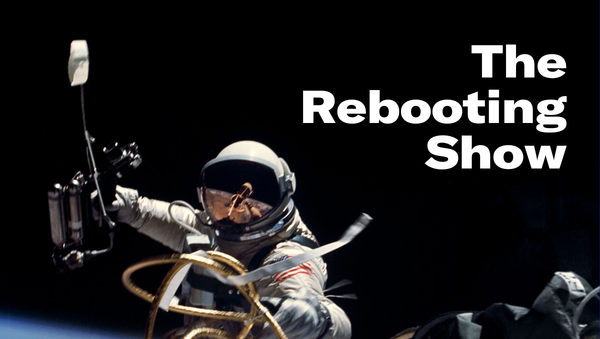Churn wars
Getting a subscriber is one thing but keeping them is a different challenge

This week, The Rebooting covers the importance of mitigating churn in subscription businesses, why franchises are critical to brands and why running and writing go well together. Also: No mentions of the election.
The rear-guard fight in the pivot to paid

The pivot to paid is, in most ways, a positive development in the search for sustainable media models. That’s not to say ad-dependent media is dead, not by a long shot. But too often in the excitement around subs the attention goes to acquisition vs retention. And the latter is where the true health of a subscriptions business is gauged. After all, the magic of subscriptions is recurring revenue, so better focus on it recurring.
Churn is an inevitable fact of life for subscriptions business. You need to keep attracting customers because you will lose some of your customers. This can become acute, as highlighted in a leaked report out of The Wall Street Journal that calls to mind The New York Times Innovation Report of 2014. The authors fret that for all the rah-rah talk of new subscriber numbers, there were sometimes more people dropping off as subscribers than joining at the Journal. (As an aside, the Journal is one of those publications that require you to call to cancel, which is a sign of not having a ton of confidence in the value you’re delivering, in my book.)
These are issues not unique to the Journal. Bob Cohn, the president of The Economist, detailed how The Economist has squarely focused on churn by adding in new perks and zeroing in on habit forming products.
All that said, churn is not defeat. There’s a tendency internally to view things as a zero-sum game: Losing a subscriber is a big L. But there’s more nuance. Here’s how Jack Marshall, who ran memberships at Digiday (and is now consulting if you need help with building a subs strategy), put it to me:
Your product isn’t for everyone, and that’s OK. More importantly, low churn for the sake of low churn is counterproductive - in reality, there’s a sweet spot of acceptable turnover to aim for. Extremely low churn can indicate you’re not stopping enough of your audience, failing to convert them at an optimal rate, or that it’s time to raise pricing, for example.
These are some key points gleaned from building a subscriptions business:
Get people active early. The most important email you’ll send a new subscriber is the first email. That is the opportunity to get the person using the product. Too often publishers assume people know all the different things they can get with their subscriptions. Normal people are too busy for that. Those who start to use a product immediately are far more likely to remain good customers.
Focus on habits. Habit is everything in media. If you can get people in the habit of reading you every day or every week, you are far less likely to lose them. That’s why publishers prioritize email newsletters for subscribers. They build habits of content consumption that by their nature mitigate churn.
Develop user journeys. One of the key aspects of building our subscriptions program was developing user journeys that made sure we could continue to keep people engaged with the product. This was hard and unglamorous work that made a big difference as we saw churn rates go down markedly. (Shout out, Brianne Kennedy.)
Look for quick wins. There are some optimizations that can go a long way. For instance, we had an issue with bad credit cards because many subscriptions were expensed on corporate cards. The reality of the media and marketing businesses is people change their jobs all the time. So we had an involuntary churn issue. Simple steps like credit card auto updating -- thanks to Washington Post’s Miki King for suggesting that one -- make a big difference, as does on-site messaging when cards are due to expire.
See customer service as a revenue driver. One of the things about turning your audience into customers is you suddenly have a lot more customers. Having thousands of people pay you is a great thing. But guess what? You need to provide service. A surprisingly number of very sophisticated executives will forget how to spell their company’s name and even their own names. Nobody can remember their password. There are lots of tools now to ease the burden, but skimping on customer service is a good way to a higher churn rate.
Why Confessions resonated
One of my colleagues at Digiday once lightly groused how repetitive I could be talking about “differentiation.” I can understand that. Leading a team sometimes requires adopting the habit of a politician to boil down complex matters into memorable soundbites that are then repeated. This is insufficient -- there has to be depth in understanding in order to execute -- but it serves a purpose of getting a bunch of different people on the same page. The trick is to turn something abstract (honesty as an organizing principle) into reality.
A good example of this is Digiday’s popular “Confessions” series. This sprang from our conviction that we needed to differentiate with honesty. But how to consistently do that? We turned to “Confessions” as a way to trade anonymity for candor. We needed to get around the PR-driven narratives of the industry. Confessions started as a response to that, kicking off in 2012 with the viewpoints of an actual “25-year-old media planner.” Since then Digiday has done dozens of Confessions from all sides of the industry, and the feature has become an important part of the brand. Owning franchises is essential.
Why writing is like running
Getting back to regular writing has been humbling. What would take me an hour now takes two. What would be relatively a breeze is more arduous. That’s because writing is a habit more than a talent. There are some naturally gifted writers, but for the overwhelming majority writing is something that requires a lot of work. Haruki Murakami’s “What I Talk About When I Talk About Running” got this right by finding the parallels between the two somewhat lonely and frustrating activities that reward those that embrace routine and incremental progress. He writes:
Writers who are blessed with inborn talent can write easily, no matter what they do—or don’t do. Like water from a natural spring, the sentences just well up, and with little or no effort these writers can complete a work. Unfortunately, I don’t fall into that category. I have to pound away at a rock with a chisel and dig out a deep hole before I can locate the source of my creativity. Every time I begin a new novel, I have to dredge out another hole. But, as I’ve sustained this kind of life over many years, I’ve become quite efficient, both technically and physically, at opening those holes in the rock and locating new water veins. As soon as I notice one source drying up, I move on to another. If people who rely on a natural spring of talent suddenly find they’ve exhausted their source, they’re in trouble.
Things to read, subscribe to and watch
Nick Quah is a great example of an early pioneer in micro media. He found his niche in the business of podcasting and became the go-to expert. The Marker has a nice profile of Quah’s Hot Pod. Also, I did a podcast with him a few months back.
My wife has published a book, The Business of Aspiration. It’s a look at how people’s notions of status are changing and what that means for building brands.
The future of work is, for obvious reasons, a booming area. I’m of the mind that work will be permanently changed by this period. Kevin Delaney, one of the founders of Quartz, is pursuing this thesis with a great newsletter, Reset Work. This is a great area for multiple new brands.
I’ve enjoyed the Netflix documentary on The Challenger disaster, a seminal moment of my 1980s childhood. What strikes me in retrospect is how the signs were there all along that NASA was courting disaster, but the space agency was high on its own supply. Institutional arrogance typically does not end well.
Coming up next week: A look at the different “lanes” publishers can occupy. Please share this email with a friend or colleague. Email me with thoughts at bmorrissey@gmail.com.




